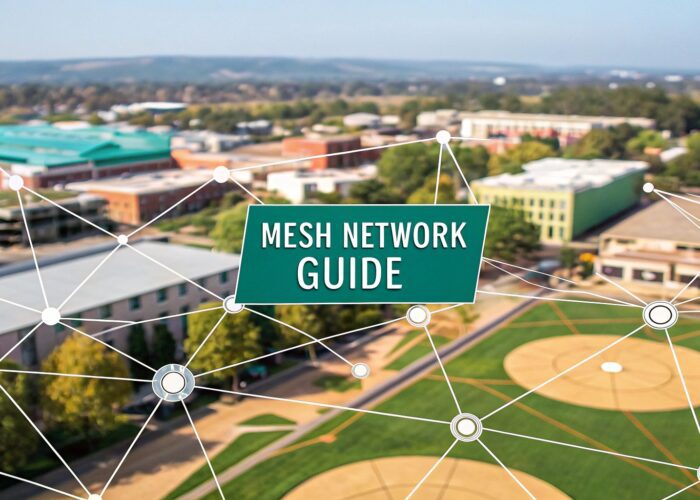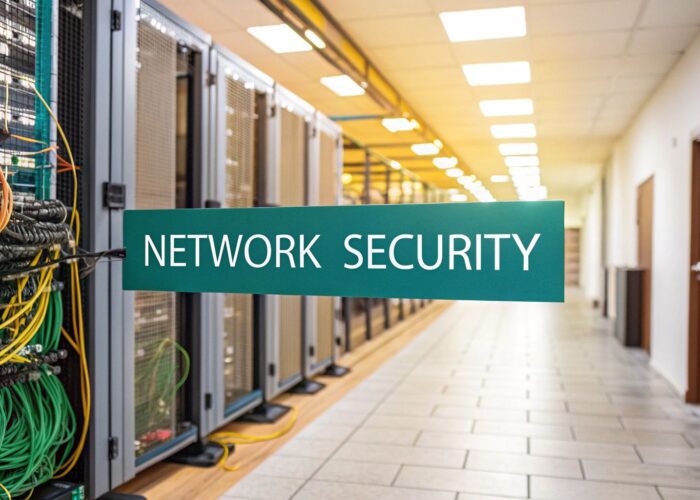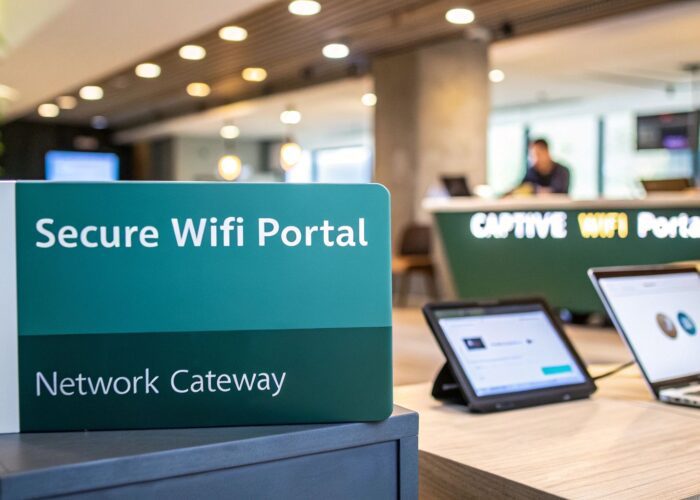Feeling like you're juggling a circus of network licenses? Hey there! Let's talk about the Meraki subscription licensing model from Cisco. It's designed to be your 'easy button' for managing your entire Cisco Meraki network infrastructure. Think of it as the engine that powers everything from automatic updates to the advanced features your organization depends on daily.
Welcome to Simplified Network Management
Managing a modern network can get complicated, fast. We've all been there! This is especially true in dynamic places like schools, retail stores, or any office that has a Bring Your Own Device (BYOD) policy. Traditional licensing models just weren't built for that kind of flexibility. An Education hub needs to scale its Wi-Fi for a new wave of students, a Retail shop wants to offer amazing guest access through a Captive Portal, and a corporation has to securely manage hundreds of personal devices connecting to its network.

This is exactly where the Cisco Meraki ecosystem comes into its own. Instead of treating a license like a rigid, one-and-done purchase, Meraki frames it as an ongoing service. It helps to think of it less like buying a software CD and more like subscribing to a streaming service. You always get the latest content, features, and support without having to buy a whole new version every year. It’s a much friendlier way to stay current.
Powering Modern Network Experiences
Choosing the right Meraki subscription licensing tier is what unlocks the powerful tools you need for today’s connected world. It's the key to creating secure, user-friendly experiences that are tailored to what your industry actually needs, whether you're in Education, Retail, or running a corporate BYOD network.
For example, this licensing approach is what makes these awesome features possible:
- Engaging Captive Portals: For Retail, this turns guest Wi-Fi into a marketing tool with branded splash pages and valuable data capture.
- Advanced Authentication Solutions: In corporate BYOD environments, features like IPSK and EasyPSK make it simple to onboard thousands of devices without sacrificing security.
- Scalable Campus Wi-Fi: For schools and universities, it gives IT teams an easy way to manage network access across dorms, libraries, and lecture halls.
A Meraki license is more than just a permission slip to use the hardware; it's your all-access pass to the cloud-managed dashboard, 24/7 enterprise support, and a continuous stream of firmware and feature updates from Cisco.
At the end of the day, this model changes network management from a reactive chore into a real strategic advantage. It makes sure your Cisco Meraki infrastructure is always up-to-date, fully supported, and ready for whatever comes next. That lets you focus on your core mission, not on chasing down license renewals.
Why Meraki Ditched the Old Licensing Model
To really get why Meraki licensing works the way it does today, let's take a quick trip down memory lane. For a long time, the standard was a co-termination model. In theory, it sounds simple, but in practice, it was a major headache for IT and finance teams.
Think of it like this: imagine if every single subscription you have—Netflix, Spotify, your gym membership, all of them—were forced to renew on the exact same day each year. Sounds stressful, right?
That one single renewal date created a huge administrative and financial bottleneck. Your finance department would have to approve one massive payment all at once, and the IT team would be sweating bullets, knowing that a single missed deadline could have disastrous consequences. For growing businesses, especially in sectors like Retail or Education, this kind of rigidity was a deal-breaker.
With the old co-term model, you had to prepay 100% of the license fees upfront, which could be a real hit to the budget, particularly for organizations with a lot of devices. All licenses were then set to expire on a single calculated date. You got a 30-day grace period, but after that, if the payment wasn't sorted, you were looking at a network-wide shutdown. It put an incredible amount of pressure on everyone to meet one high-stakes deadline.
Solving Real-World Challenges
The switch to a more flexible meraki subscription licensing model wasn't just a random business decision; it was a direct answer to these real-world frustrations. Cisco Meraki saw that modern organizations, especially those dealing with corporate BYOD policies and constant change, needed a system that could bend without breaking. The main goal was to get rid of that all-or-nothing renewal day.
This new approach gives organizations some much-needed breathing room:
- Improves Cash Flow: Spreading costs out makes budgeting far more predictable and helps avoid that one giant annual expense.
- Reduces Administrative Burden: Renewals become much easier to manage without a single, do-or-die deadline looming over your head.
- Increases Flexibility: Businesses can now add or change licenses as they grow, without being handcuffed to an inflexible structure.
The move away from a single co-termination date wasn't just a policy change; it was a fundamental shift toward a more customer-friendly model that supports business agility instead of hindering it.
At the end of the day, this change gives you the power to manage your network infrastructure on your own terms. It’s a model that works for dynamic environments where tools like Captive Portals for guest Wi-Fi or secure Authentication Solutions like IPSK and EasyPSK are critical for day-to-day operations. If you want to dig deeper into the timeline of these changes, this recap of Meraki's quarterly updates offers some great insight. This evolution ensures your Cisco network can scale and adapt right alongside your business.
Understanding Your Current Licensing Options
Getting a handle on Meraki licensing is really about finding the perfect match for your organization's needs. It's not as complex as it sounds! Right now, there are three distinct frameworks on the table, and each one offers a totally different way to manage your Cisco Meraki network. Knowing how they work is the first step toward making a smart decision that actually supports your goals, whether you're in Education, Retail, or managing a corporate BYOD environment.
The three models you'll come across are the classic Co-Termination, the more detailed Per-Device Licensing (PDL), and the new Subscription Licensing model. Each was built to solve a different kind of problem. As of 2024, Cisco Meraki keeps these frameworks available to suit different organizational structures. Co-Term simplifies everything down to a single renewal date, while PDL gives you granular control with individual expiration dates for each device.
The newer Subscription model, however, strikes a flexible balance between the two. It lets you choose custom durations from 12 to 120 months and, most importantly, is completely hardware-agnostic.
Comparing the Core Frameworks
Think of Co-Term like putting all your eggs in one basket. It’s wonderfully simple because there’s only one date to remember, but if you miss that date, everything goes offline. PDL is the complete opposite—it’s like juggling a separate subscription for every single device you own. This gives you pinpoint control but can quickly turn into an administrative nightmare as your network scales.
The new Meraki subscription licensing model aims to give you the best of both worlds. It introduces the flexibility to align your licensing with your real-world needs and budget cycles, which is a massive advantage for any organization. This is especially critical when you're managing features like Captive Portals for guest WiFi or complex Authentication Solutions that can't afford any downtime.
This infographic shows how the subscription model provides the foundation for better security, centralized management, and scalable deployment.
The image really drives home that your licensing approach is what enables all the key benefits your business relies on.
The biggest shift with Subscription Licensing is moving from a rigid, hardware-tied system to a flexible, hardware-agnostic one. You can now upgrade your Wi-Fi access points or switches without having to purchase entirely new licenses. How great is that?
This change is a game-changer for dynamic environments where technology is always evolving. For instance, a university in the Education sector can upgrade its campus Wi-Fi hardware over the summer without a single disruption to its licensing agreement. A Retail chain can add new stores and devices without being trapped in a rigid, all-or-nothing renewal cycle. For a deeper dive into how these policies affect data privacy, check out our guide on Meraki and the GDPR.
Ultimately, this modern approach from Cisco gives you the power to plan for the long term without being handcuffed to inflexible terms.
The Power of Flexibility in Subscription Licensing
So, what’s all the buzz about the Meraki subscription licensing model? Put simply, it’s about giving you flexibility and control over your network in a way that just wasn't possible before. This friendly approach completely rewrites the rules for how you can plan, budget, and scale your Cisco network infrastructure.
The most immediate win for many businesses is the shift from a massive capital expense (CapEx) to a predictable operational expense (OpEx). Instead of one huge, upfront investment, you treat your network licensing like any other monthly subscription. This makes budgeting so much easier and opens the door for businesses of all sizes to access top-tier Cisco Meraki networking.
Scaling On Your Terms
This model gives you the freedom to grow your network precisely when you need to. Think about it. A Retail store can easily add a new Wi-Fi access point to handle the holiday rush. A university in the Education sector can scale up its network to support a growing student body without being forced into a massive, premature hardware purchase. You just add licenses on a per-device basis as you go.
That kind of agility is invaluable. It means you stop paying for capacity you aren't using, making sure your investment always matches your actual needs. It's a huge help for managing a corporate BYOD policy, too, where the number of devices on your network can change from one day to the next.
The core idea is to future-proof your network. With a subscription, you’re not just buying a license; you're ensuring continuous access to the latest security updates, firmware patches, and innovative dashboard features from Cisco Meraki.
When Cisco rolled out this new model in late 2023, it introduced an incredible amount of freedom by letting customers subscribe monthly. Organizations can now buy licenses for individual devices or entire groups, scaling up or down as needs evolve without the anchor of huge upfront costs.
This flexibility is the engine that powers essential features like custom Captive Portals and secure Authentication Solutions such as IPSK and EasyPSK. At the end of the day, this modern licensing model puts you firmly in the driver's seat of your network's budget and its future.
How Licensing Powers Real-World Scenarios
It's one thing to talk about the technical side of a Meraki subscription licensing model, but it’s another to see it in action. The real value comes alive when you connect these licensing options to the challenges people face every day in busy environments. This is where the right license stops being a line item on an invoice and becomes the engine for a smooth, secure network.
Let's look at how a smart Cisco licensing strategy helps different industries, from bustling Retail stores to sprawling university campuses in the Education sector. The features you need are unlocked by the license you choose.
Empowering the Retail Experience
For any Retail business, guest Wi-Fi is no longer just a perk; it's a vital tool for customer engagement. The right Meraki license gives you the power to turn your network into a marketing asset through Captive Portals. These are the branded login pages customers see when they jump on your Wi-Fi.
Instead of a boring password field, you can create a fully branded splash page that advertises promotions, collects valuable marketing info, or points shoppers to your social media. It's a simple but powerful way to build a real connection with your customers. If you're new to the concept, you can learn more about what a captive portal for WiFi is and how it can be used.
The screenshot below shows just how easy it is to set up a basic click-through splash page right in the Cisco Meraki dashboard.
This simple interface is your command center for customizing the entire guest experience, making sure it fits perfectly with your brand's message and goals.
Securing Education and Corporate Networks
In Education and corporate offices with BYOD policies, the challenges are different but just as tough. A university needs to securely connect thousands of student devices, while a company needs to give employees easy network access on their personal phones and laptops without opening up security holes.
This is where advanced Authentication Solutions, enabled by your Meraki subscription licensing, become absolutely critical.
- Identity Pre-Shared Key (IPSK): This is a game-changer. It lets you assign a unique password to every single user or device. That's a massive security upgrade from having one shared Wi-Fi password for an entire campus or office.
- EasyPSK: This takes the concept even further by making it incredibly simple for IT admins to manage thousands of unique keys without getting lost in manual work. It's robust security with a refreshingly user-friendly approach.
The right licensing framework provides the foundation for these advanced security features, making it possible to manage a high-density BYOD environment securely and efficiently. It’s what keeps the network both accessible and safe.
In the end, choosing the right Meraki subscription licensing is about much more than just keeping the lights on. It’s about unlocking the specific features that help your organization succeed, whether that’s engaging customers, educating students, or empowering a productive mobile workforce.
Putting It All Into Practice: Smart Meraki License Management
Alright, now that we've covered the nuts and bolts, let's talk about real-world strategy. How do you actually manage your Cisco Meraki licenses to get the most bang for your buck? It's not just about ticking a box to avoid network downtime. Treating your licensing as a living part of your IT strategy is what separates a good network from a great one.
First things first: picking the right license tier. It's tempting to just go with the basic option, but you need to think bigger. What are you trying to achieve? Whether you're in Retail, Education, or managing a corporate BYOD environment, your goals dictate your license. If you're running a public-facing guest Wi-Fi, for example, something like the Advanced Security license isn't a luxury—it's essential for content filtering and threat protection.
Stay Ahead of the Game with Proactive Renewals
If there's one piece of advice we can give, it's this: don't be reactive. Proactive management is everything when it comes to meraki subscription licensing. Waiting until your renewal is a week away is a surefire way to cause unnecessary stress and, worse, risk a service outage. Get ahead of it. Plan your renewals to line up with your budget cycles so there are no last-minute scrambles.
We always recommend making regular health checks on your Meraki dashboard a standard practice. It’s the single best way to get a real-time, accurate picture of your entire device fleet.
- Audit Your Devices: Are all those access points and switches you're paying for actually deployed and in use?
- Check Feature Usage: Are you actually using the features you're paying for? Things like Captive Portals or advanced Authentication Solutions can be incredibly powerful, but only if you use them.
- Look to the Future: Is a new office location on the horizon? Do you expect a surge in new devices next quarter?
The whole point here is to make sure your licensing spend matches your actual needs. A quick review in the dashboard can easily show you where you're overpaying for unused hardware or where an upgrade could unlock features you didn't even know you were missing.
When you manage your licenses this way, they stop being a simple operational cost and become a strategic asset. You can confidently enable features like IPSK or EasyPSK for secure device onboarding or just sleep better at night knowing your network is stable. A little bit of planning truly goes a long way.
For a deeper dive into the Meraki ecosystem itself, our guide on what is Cisco Meraki is the perfect starting point.
Answering Your Top Meraki Licensing Questions
Let's be honest, navigating Meraki subscription licensing can sometimes feel like a puzzle, especially if you're managing networks in busy environments like Education, Retail, or corporate offices with BYOD policies. Here are some straightforward answers to the questions we hear most often.
What Happens if My License Expires?
If your Cisco Meraki license lapses, the good news is your network doesn't instantly grind to a halt. Meraki gives you a 30-day grace period, which is a helpful buffer to get your renewal sorted out. During this month, your hardware will keep passing traffic just like normal.
The catch? You'll be locked out of the Meraki dashboard. That means no configuration changes, no network monitoring, and no access to technical support until the license is renewed.
How Does the Grace Period Actually Work?
Think of the grace period as a friendly safety net. Meraki will start sending you notifications before the expiration date and will continue to remind you during those 30 days. It's designed to make sure a simple administrative oversight doesn't cause a major outage.
But don't let it slide. Once that 30-day window closes, your Cisco devices will stop passing traffic, and your network will effectively go offline. The best strategy is always to be proactive and renew well ahead of time.
How Do I Choose the Right License for My Needs?
Picking the right Cisco Meraki license tier is all about matching features to your goals. Are you setting up Captive Portals for guest Wi-Fi or deploying advanced Authentication Solutions like IPSK and EasyPSK? The license you choose makes all the difference.
Here’s a quick breakdown:
- For most Wi-Fi access points and switches, the standard Enterprise license is the go-to choice.
- For MX security appliances, you have more options: Enterprise, Advanced Security, or Secure SD-WAN Plus. Your decision here really comes down to how much firepower you need for threat protection and security.
At Splash Access, we're all about helping you get the most out of your Cisco Meraki gear with custom captive portals and powerful authentication solutions. Ready to transform your guest Wi-Fi experience? Learn more about what we do at Splash Access.






